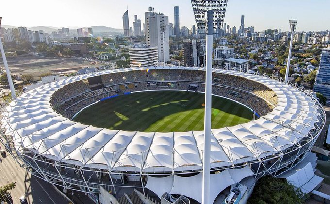The iconic Gabba stadium is to be demolished and replaced by a new stadium at Victoria Park after the 2032 Olympics. The new stadium will act as a multipurpose venue for sports like AFL and Rugby. It will consist of 60,000 sitting capacity and will be built for the Olympics. Queensland Premier David Crisafulli announced on Tuesday and addressed the challenges faced by the stadium and sees an efficient infrastructure to host major cricketing series like men’s and women’s Ashes series, Border-Gavaskar trophy, and further ICCC events in the future.
“This decision gives us certainty about venues and scheduling which in turn allows us to ensure Brisbane hosts the very best possible international and domestic cricket, we strongly advocated building a stadium in Victoria Park together with Queensland Cricket, the AFL and Brisbane Lions, and cricket will play a major role in ensuring this significant investment delivers long-term benefits for cricket fans and the people of Queensland.” Cricket Australia (CA) said.
“On behalf of the cricket community we want to thank the Queensland Government for seizing this once-in-a-lifetime opportunity to give the fans, the city and the state the stadium they deserve.” The CA added.
Gabba’s History
The Gabba has proudly hosted 67 men’s test matches and 2 women’s test matches since the first in 1931. It has a rich history of the first ever tied test match to take place. It also holds the distinction of being the first venue to hold a T-20 international in Australia. It has undergone many renovations to become what it is today one of the finest infrastructures of the cricket fraternity.
Pitch at Gabba
Australian cricket fans consider The Gabba among the most genuine playing surfaces for cricket throughout Australia. The wicket at Gabba enables fast bowlers to have bounce for quicks alongside helpful movement while provided consistent bounce that benefits batsmen stroking the ball. Many Australians see Kevin Mitchell jnr as the best wicket-maker in the country and he keeps refusing to make a drop-in pitch which would not preserve the traditional wicket characteristics.



